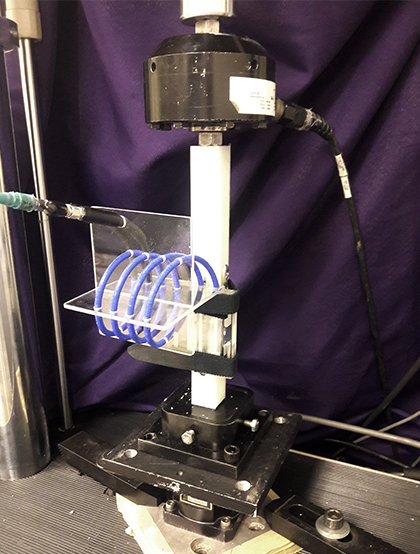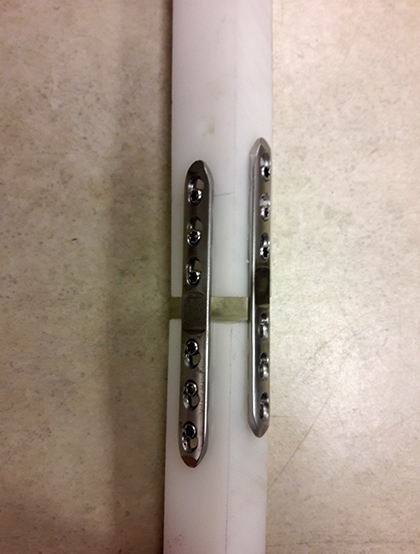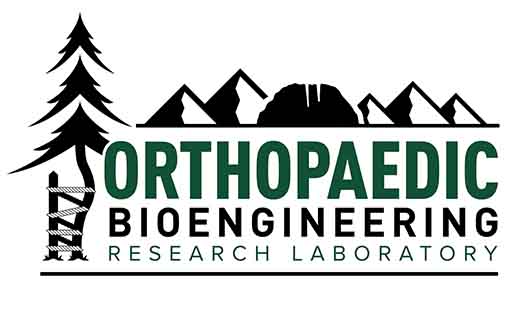Fracture Healing Diagnosis and Prediction
The American population is treated for nearly eight million long bone fractures per year. Approximately 10% of these fractures do not heal properly. Many of these non-unions or pseudoarthroses result when there is a severe or communited (highly fragmented) condition that does not proceed through a stabilized (intramembranous ossification) healing pathway.
Early detection of aberrant healing would allow for newer classes of more non-invasive revision strategies to be utilized, as well as ease the technical demands of more open revision procedures. Unfortunately, the course of aberrant fracture healing is not easily diagnosed in the early time period when standard radiographic information (i.e. X-rays) of the fracture site is not capable of discriminating the healing pathway.
We have hypothesized that healing in the critically important early time period can be determined by monitoring of the implanted hardware mechanics. This postulation leverages the previously demonstrated phenomena whereby the soft tissue callus and newly formed bone progressively assume part of the load as healing proceeds, thus reducing the burden (and associated strain) on the implanted hardware.
To address the critical need of identifying aberrant fracture healing during the early time period, we have formed a collaboration with Dr. Volkan Demir’s group (Bilkent University, Anakara, Turkey) and developed a wireless, inductively-powered (no implantable power source), biocompatible micro-electromechanical sensor (bioMEMS) that is capable of monitoring the surface strain on implanted bone fracture hardware and reports the data using radio frequency (RF) technology.

Loading experiment demonstrating the application of an electromagnetic field to a simulated fracture.

